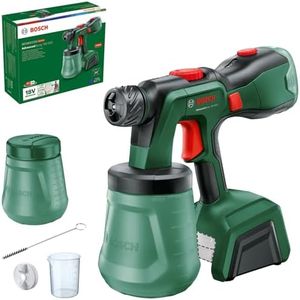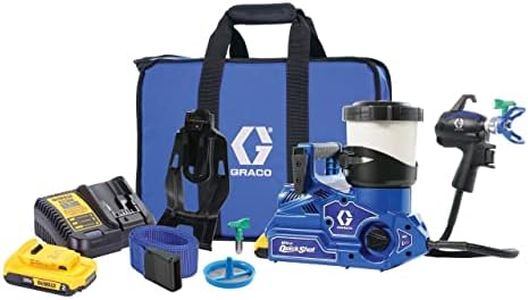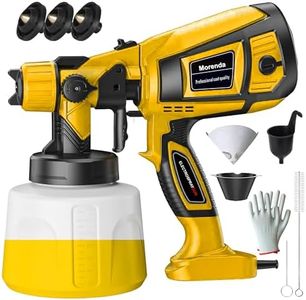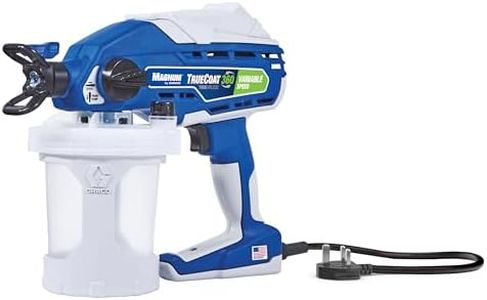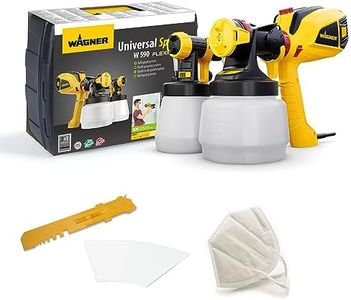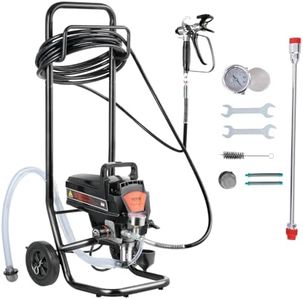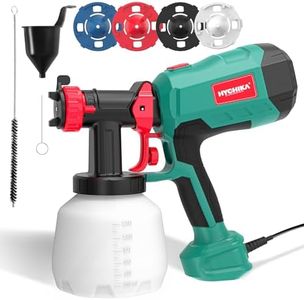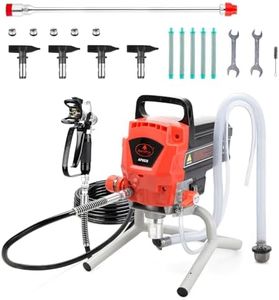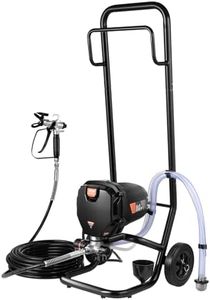We Use CookiesWe use cookies to enhance the security, performance,
functionality and for analytical and promotional activities. By continuing to browse this site you
are agreeing to our privacy policy
10 Best Commercial Paint Sprayers
From leading brands and best sellers available on the web.Buying Guide for the Best Commercial Paint Sprayers
Selecting the right commercial paint sprayer is important because it can make your work more efficient, deliver a better finish, and handle the scale of commercial projects. When shopping, think about the kinds of jobs you’ll be doing—like painting large interiors, exteriors, or furnishings—and the types of paints or coatings you’ll use. Balancing power, versatility, and ease of maintenance will help you find a sprayer that makes the job easier and delivers great results.Sprayer TypeThe sprayer type refers to how the machine moves paint from its container to the surface. The main types are airless, HVLP (High Volume Low Pressure), and pneumatic/compressed air. Airless sprayers are popular for big areas and thick coatings because they push paint quickly and cover large surfaces fast. HVLP sprayers work at lower pressures, giving you more control for detail work and reducing overspray. Pneumatic sprayers are less common for large commercial use but offer high-quality finishes. Choose based on whether you need speed for big jobs (airless) or detailed, controlled work (HVLP).
Motor PowerMotor power determines how forcefully paint is sprayed and how thick the paint can be. More powerful motors let you spray thicker paints and cover large areas quickly, which saves time on big jobs. These can be electric or gas-powered; gas sprayers are great for outdoor work without easy access to electricity. Smaller motors suit detail work or lighter coatings. Think about whether your projects involve thick coatings and big surfaces, or smaller, detailed jobs—a more powerful motor fits large projects, while lower power is best for fine finishing.
Max Tip SizeThe tip size refers to the small opening at the end of the sprayer where the paint comes out. Larger tips let you spray thicker coatings and cover more area faster, while smaller tips are better for thin paints and detailed work. Different jobs need different tip sizes: walls and fences often need larger tips, while trim or furniture needs something finer. If you’ll use a variety of coatings or need flexibility, choose a sprayer that supports many tip sizes.
Paint Flow RateThe flow rate is how much paint the sprayer can deliver in a set time, usually measured in gallons per minute (GPM) or liters per minute (LPM). Higher flow rates mean you can finish large surfaces more quickly, but you might have less control. Lower flow rates are better for intricate or smaller jobs. Pick a flow rate that matches how quickly you want to work and how precise you need to be—big commercial spaces call for higher rates, while detail work needs less paint flow.
Hose Length and FlexibilityHose length and flexibility affect how far you can move away from the paint source and how easily you can reach tricky areas. Longer hoses are useful for big sites so you don’t have to move the sprayer often. Flexible, kink-resistant hoses make it easier to work efficiently. Consider how much space you’ll need to cover and whether portability is important—long and flexible hoses are essential for large or multi-story projects.
Ease of Cleaning/MaintenanceCommercial sprayers need to be cleaned well to last long and work properly. Some have easy-clean features or reversible tips that help you clear clogs quickly. Simple maintenance saves time and headache, especially if you use the sprayer frequently. If you want less downtime and easier upkeep, look for sprayers designed with cleaning in mind.
Paint CompatibilityNot all sprayers work well with every type of paint or coating. Some can handle thick, heavy-duty paints (like latex or elastomeric), while others are best with stains or thinner paints. Think about the coatings you use most for your work—choose a sprayer that works with those materials to get the best results and prevent clogging or damage.
